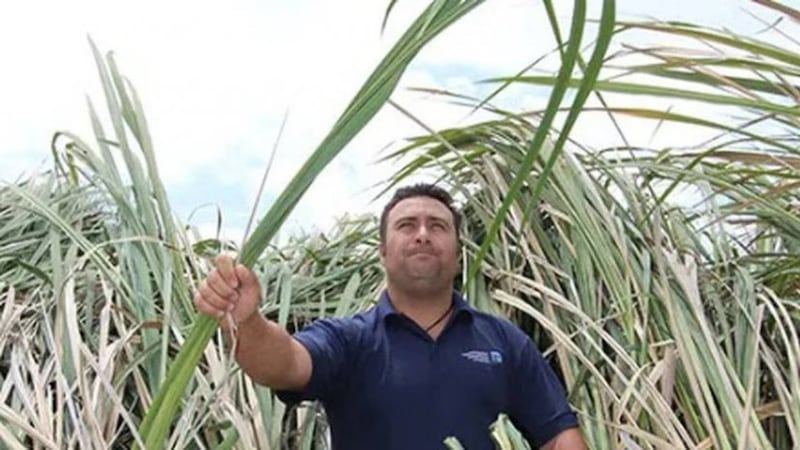Northland Regional Council staff member Curtis Harris with Manchunian rice grass at Tangowahine, in the northern Kaipara. Photo / Te Rito Journalism Project.
Northland flooding may have spread an invasive grass that stops other plants from flourishing.
Councillor Geoff Crawford, Northland Regional Council’s Biosecurity and Biodiversity Working Party chairman, says due to the recent flooding, Manchurian rice grass may have spread further in the region.
The main infestation of the grass is in a Progressive Containment Zone in the Kaipara, along a 50km stretch of the Northern Wairoa River that begins near Ruawai and flows to Tangiteroria.
The flooding may have caused clumps of the grass to break off and spread inside and outside of the zone.
“Where depends on the flow of the water at the time... it’s not always downstream as it can be pushed back upstream depending on tides or it can be pushed outwards onto farmland,” Crawford says.
Machinery used to repair flood damage may also have spread the pest, which grows in dense clumps and stops other plants flourishing. It can also contribute to flooding by clogging waterways.
“If left unmanaged, this invasive grass represents a major threat to all river, stream and wetland systems in Tai Tokerau, as well as to production environments as it also readily invades pasture,” Crawford says.
“Please monitor all areas where contract machinery has come onto site as they might have carried in root fragments of rice grass that can easily establish at a new site.”
Early detection of Manchurian rice grass means higher chances of eradication because the species spreads quickly.
It can be sprayed but is extremely difficult to kill.
Manchurian rice grass is similar to raupo, but the differences are:
- Raupo dies back over winter; rice grass does not
- Raupo twists at the end of the foliage, rice grass is pointed.
- Raupo has a smooth, thick leaf whereas rice grass has a veiny leaf and a thick midrib.
- Raupo has a bullrush head when in seed, rice grass has a flower-type seed head.
Reports of new infestations can be made to Nancy Chaves: nancyc@nrc.govt.nz or 021 321 017.
For further information go to www.nrc.govt.nz/pestcontrolhub.


